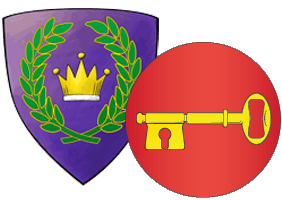Update to the SCA Bullying & Harassment Policy
The Board of Directors updated the bullying & harassment policy at their April 4, 2020 meeting. The updated policy will be placed in the Society Seneschal’s Handbook. It is listed is below, and is also available in the President’s summary of the meeting.
When does the Society policy against bullying & harassment need to be displayed during virtual activities?
- Gatherings of friends via Zoom? — policy not needed
- Official SCA thing happening on Zoom? — policy needed
- Super-casual hanging out in the EK Google Meet room, or in another Google Meet room set up using an SCA email? — policy needed
- Individual makes an instructional video? policy not needed in the video
- Individual shares video on general YouTube? or on their own FB page? policy not needed
- Individual shares their own instructional video in an official SCA virtual space (EK YouTube channel, Official FB, etc)?
All material posted in official SCA spaces is already covered by the policy, so individuals do NOT need to include the policy when sharing material.
- Of course, moderated spaces like the Unofficial FB page already have their own rules, clearly posted, about what’s acceptable in the group.
I. Bullying and Harassment
The SCA prohibits bullying and harassment of all individual and groups. Bullying is systematic and unwelcome behavior which involves the use of influence, threat, intimidation, or coercion to cause hurt or harm to another person or group of people. When the bullying behavior is based on a protected class (1) , that behavior is defined as harassment.
(1) race, sex, religion, national origin, gender, sexual orientation, age, or disability
Bullying and Harassment may be overt, as in the following non-inclusive list of examples:
- Verbal abuse, including using racial, homophobic, transphobic, ableist epithets, etc.
- Non-consensual physical contact, violence, or threatening gestures
- Displaying material that is offensive, degrading, or threatening to a protected class
- Consistent demeaning remarks or malicious teasing
- Stalking or predatory behavior
Covert:
- Spreading rumors or innuendo with malicious intent
- Deliberate exclusion, isolation, or alienation of an individual without just cause
- Using rank, title, or office to intimidate others
Provided that the behavior does not rise to the criteria listed above, bullying and harassment is not:
- Single episodes of social rejection, dislike, tactlessness, or forgetfulness
- Mutual arguments, disagreements, or fights
- The termination, mutual or not, of a romantic relationship or friendship
- Reasonable constructive feedback or critique
The test for bullying is the reasonableness of the behavior and the impact of that behavior on the recipient. Participants engaging in bullying/harassment are subject to appropriate sanctions. If an individual believes they have been subjected to or have witnessed harassment, bullying, or retaliation, that person should contact a seneschal, the President of the SCA, or that kingdom’s Board Ombudsman.


